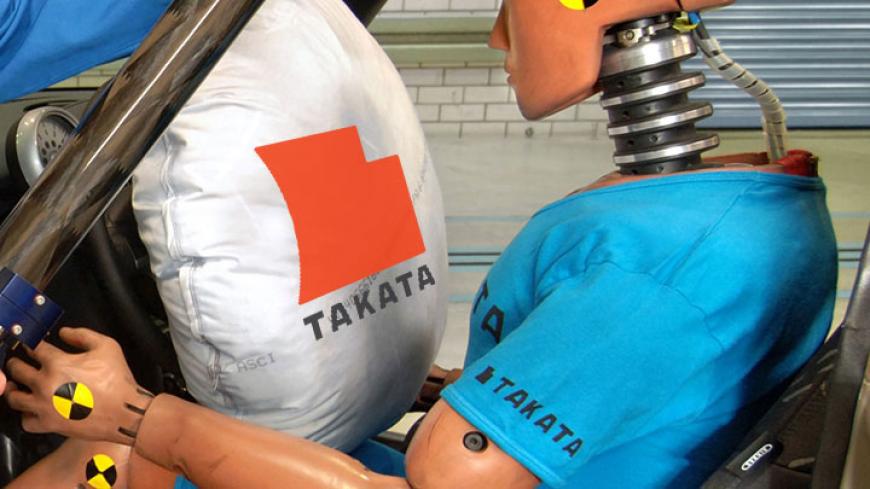Airbags Turn Fender-Benders into Deadly Crashes

When rescue personnel arrived at the scene of a minor California car accident in 2013, they thought that the driver had been shot in the face.
The following year, police responding to a Florida fender-bender were convinced that the driver’s neck wounds were the result of a stabbing.
In both cases, the source of the gruesome injuries turned out to be not an assailant, but a defective Takata airbag.
“Regardless of how or why your crash happened, Takata and the automobile company are at fault for a defective and deadly airbag."
ClassAction.com wants to remind drivers that even if they were at fault for an accident, Takata is ultimately responsible for defective airbags that spray metal shrapnel into the cabin when they explode.
“Airbags are intended to save lives—not threaten them,” said Andrew Parker Felix, a Morgan & Morgan products liability attorney who has successfully handled a number of defective Takata airbag cases across the country. “Regardless of how or why your crash happened, Takata and the automobile company are at fault for a defective and deadly airbag that causes cuts or slices from metal shrapnel to the car’s occupants.”
Not the Typical Injuries You See From an Airbag
A 51-year-old Orlando woman suffered deeps cuts on her neck that, according to the crash report, “were not consistent with crash injuries.”
No windows were broken in the vehicle that might have caused sharp glass to cut her. It was only after cross-referencing similar crash reports and hitting on the Takata link that investigators concluded the slice wound to her trachea had been caused by metal airbag shrapnel. The Takata airbag had exploded with such force out of the steering column that its shards also sliced off the turn signal lever.
“It’s not the typical injuries you see from an airbag,” said Chief Medical Examiner Dr. Jan Garavaglia. “It’s the internal parts of the airbag tearing through that caused the injuries.”
Takata airbags are far from typical. Blamed for 14 deaths and hundreds of injuries, Takata airbags are the only airbags that use the volatile chemical ammonium nitrate. The chemical propellant can destabilize in the presence of heat and humidity, leading to forceful airbag deployments that rip open the metal inflator housing, sending shrapnel into the faces, necks, and chests of passengers.
“Even in low-impact crashes, the Takata airbag defect is causing lethal injuries to drivers and passengers,” said products liability attorney Andrew Parker Felix.
Some Drivers Blinded by Shrapnel
Airbag injuries, while not uncommon, usually take the form of blunt trauma as the airbags deploy with such force that they cause bruises, abrasions, sprains, fractures, and concussions.
Takata airbag injuries are categorically different. Victims have reported deep facial or body lacerations that require stitches, as well as scarring to the upper body, arms and legs. Drivers have lost their vision from jagged pieces of metal shrapnel. Shrapnel from a Takata airbag became so deeply embedded in one woman’s breast that it wasn’t discovered until four months later after causing an infection. And the metal shards have even caused death by severed arteries. One woman bled to death in front of her children after airbag shrapnel struck her neck and chest.
[video width="640" height="360" mp4="/sites/default/files/wp-thumbnails/2016/08/Takata_Video.mp4"][/video]
Stephanie Erdman was blinded in her right eye by Takata airbag shrapnel
Such injuries are more consistent with the battlefield than the roadway. Takata, however, used ammonium nitrate in its airbags, which is also used to make military explosives and homemade bombs, like the one used in the Oklahoma City bombing.
Which begs the question: What is a chemical nearly as powerful as dynamite doing in tens of millions of vehicles?
NYT: Takata Manipulated Data and Cut Corners to Save Money
An investigation by the New York Times reveals that Takata introduced ammonium nitrate to its airbag inflators as a way to save on production costs.
“When we lit it off, it totally destroyed the fixture. It turned it into shrapnel."
A handful of manufacturers that includes Takata and Swedish-American Autoliv controls the worldwide automotive airbag market. When Takata in the late 1990s hit on a new inflator design that was up to 30 percent cheaper compared to Autoliv’s inflator, Autoliv scientists were tasked with studying the Takata design. Their tests of an ammonium nitrate inflator proved explosive.
“When we lit it off, it totally destroyed the fixture,” one of the scientists told the Times. “It turned it into shrapnel.”
Heat and humidity destabilize ammonium nitrate and make it even more volatile. An airtight inflator is one possible workaround to this problem, but the Times, citing a former Takata engineer, says Takata manipulated test data that showed leaky inflators in order to get the defective airbags to market. The engineer reportedly confronted Takata about the phony results in 2001 and was subsequently fired. Takata first announced the airbag fault in 2013.
You May Have a Case Even if the Accident Was Your Fault
Even if the accident was completely your fault, this does not excuse Takata and automakers from using a defective, dangerous, and explosive airbag design.
Andrew Felix stresses that he’s negotiated settlements for a number of clients injured by Takata airbags who were at fault for their crash.
“If you didn’t pursue a lawsuit because you were texting, intoxicated, asleep behind the wheel, or any other reason having to do with your own fault, you may still be able to bring a claim for the defective Takata airbag,” Felix said.
To find out whether you have a case, contact ClassAction.com for a no-cost, no-obligation case review.


